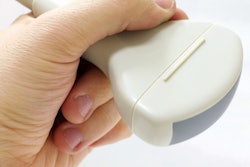Dr. Ogonna Nwawka and colleagues from the Hospital for Special Surgery studied any changes over time in the patellar tendons of 11 male college basketball players using shear-wave elastography, comparing the results with those from conventional ultrasound and scores from the Victorian Institute of Sport Assessment, Patellar Tendon (VISA-P) tool.
The players underwent conventional patellar tendon ultrasound and SWE on both knees at particular time points in the preseason and postseason. VISA-P scores were recorded throughout the season. Of the 11 players, six had baseline patellar tendinopathy on preseason ultrasound; over the course of the season, the condition progressed in four of the six.
Nwawka's group found that postseason SWE values showed a strong correlation with changes in VISA-P scores in the dominant and nondominant knees of the players, while conventional ultrasound data did not.
"These results ... [demonstrate] the benefit of this quantitative imaging technique over conventional ultrasound imaging in the characterization of clinically symptomatic patellar tendinopathy," the researchers concluded.



















